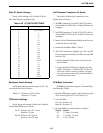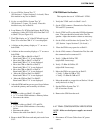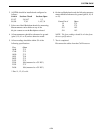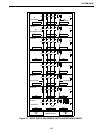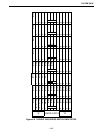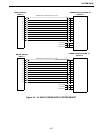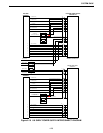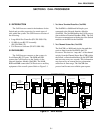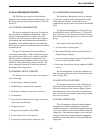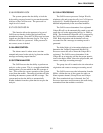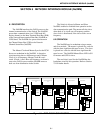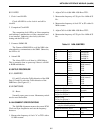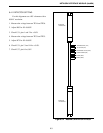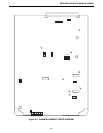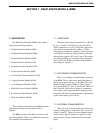
CALL PROCESSOR
5-2
5.3 CALL PROCESSOR CONTROL
The Call Processor controls several different
databases and secondary functions of the Switch. The
following are some of the major functions of the Call
Processor.
5.3.1 SYSTEM CONFIGURATION
The system configuration provides for initializa-
tion of modules and database management. When a
module sends an initialization request to the Call
Processor, the Call Processor searches the configura-
tion database and sends initialization information to
the module. If the module number is not found, the
Call Processor creates an alarm and places the module
in standby mode.
The specific parameters for each module are
contained in the database. Both configuration's data-
base and Switch-to-site setup is viewed or modified
and the channel configuration's loading time is set.
The system analyzer parameters may be viewed and
modified. The system loading may be viewed. The
total configuration database is stored and retrieved
from hard disk or floppy disk.
5.3.2 MANUAL DEVICE CONTROL
The manual device control allows the operator to
do the following:
1. Restart single or multiple modules
2. Enable/disable a module from operation
3. Read/write to memory of modules or devices
4. Set date/time.
5. Turn on/off the alarm records storage, activity log,
and screen saver functions
6. Change password.
7. Change the system title of the SMM.
8. Control the receiver voter functions.
9. Control the system analyzer operator by site.
5.3.3 SUBSCRIBER MANAGEMENT
The Subscriber Management allows an operator
to view, set or modify the Home/Group IDs and the
Unique IDs permissions. Unique IDs may be
controlled for suspend audio, and selective unit disable
(kill).
The Dynamic Reassignment of Unique IDs can
be controlled from the Call Processor. A Unique ID
may be moved to a new System and Group or it may
have the programmable group of a system set to a new
group.
This function allows the following:
1. A Unique ID to be interrogated.
2. The current ID being used on each channel to be
displayed by the operator.
3. Access for each user for Group and Unique IDs can
be set or viewed for RMF control.
4. Passwords for each user may be assigned for RMF
control.
The file management for the above databases is
done by storing and retrieving the files from the hard
disk or floppy disk.
5.3.4 ACTIVITY LOG UTILITIES
The system operator can use the Call Processor
keyboard to enter information messages. The Call
Processor monitor activity window displays alarms
and information for the current day's log and history
files. The activity log contains a time stamp of when
the activity occurred.
5.3.5 CALL COMPLETION
The call completion function handles database
management of trunk assignments and telephone
number assignments. The trunk assignments may be
viewed, set, stored or retrieved on both hard disk and
floppy disk. The telephone numbers are viewed and
assigned Unique IDs and the telephone assignment
database is stored and retrieved on the hard disk and
floppy disk.



